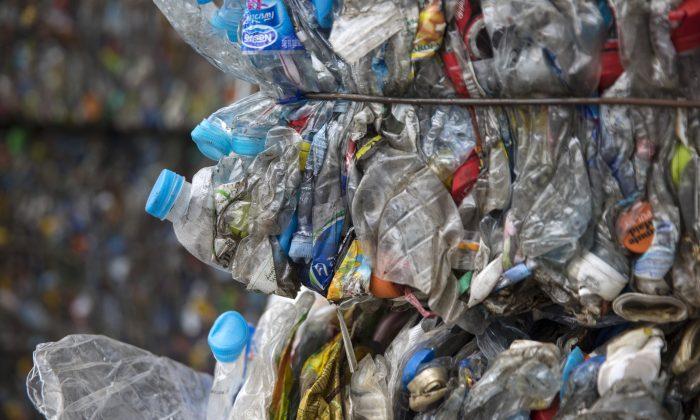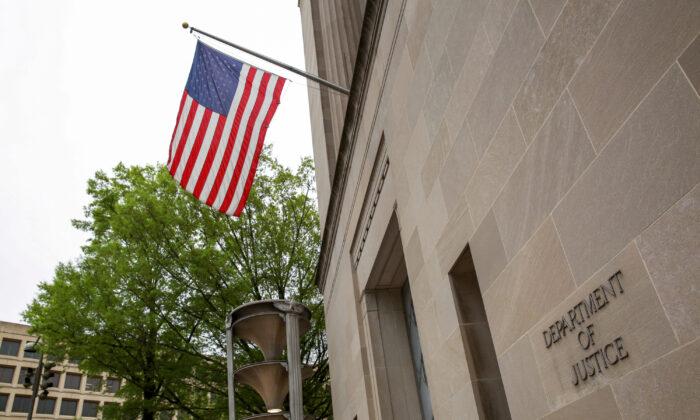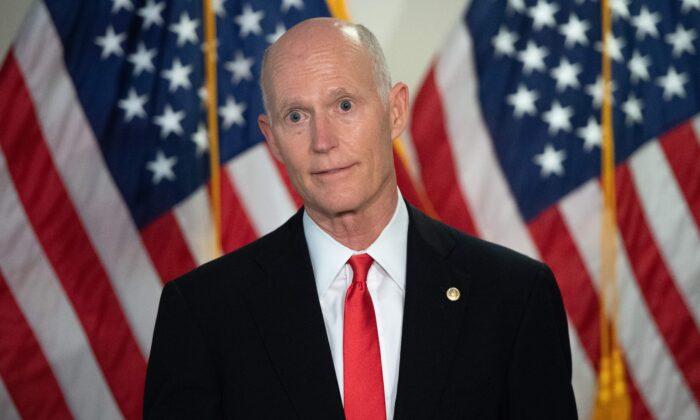Local governments across New South Wales are looking for ways to tackle the recycling challenges following China’s import restrictions on recycled materials. However, uptake of funding offered to improve recycling across the state has been slow.
In a workshop attended by local government representatives on July 20, NSW Environment Minister Gabrielle Upton called on councils to take advantage of the state government’s $47 million assistance package announced in March aimed at providing temporary relief to councils and industry bodies as China enforces its National Sword policy.
“Please take up the money that is on the table—the NSW Government’s $47 million assistance package,” the minister said during her
speech.
“I’m saying this because I am told that the EPA has not been flooded with grant applications.”
The one-off funding package is delivered through five grant programs aimed at helping local governments educate communities on recycling, supporting initiatives to reduce kerbside recycling contamination, funding projects and infrastructure to improve the quality of recycled materials, and identifying new uses for recycled materials. The grants are also designed at helping offset the extra costs that councils have incurred while processing household kerbside recycling waste as a result of China’s ban.
Upton said several programs have seen a slow uptake such as the Recycling Relief Fund—a grant for regional and rural NSW councils—which has so far only granted three applications and received an additional four applications.
Meanwhile, the Product Improvement Program, which was launched last month, has not received any applications. The program is aimed at funding co-investment in infrastructure projects to improve the quality of recycled materials being produced by recycling facilities and reduce the number of unrecyclable materials left at the end of the recycling process.
Despite this, the minister said there was still time for local governments to apply.
China’s Restrictions Prompt Global Recycling Crisis
Australia, along with the global community, was presented with a recycling problem precipitated by China’s announcement to place restrictions on imports of numerous recyclable materials at the World Trade Organisation (WTO) in 2017. The communist regime also announced that it was cracking down on illegal waste smuggling, restricting certain scrap materials from entering the country, and placing strict thresholds on contamination for each type of scrap.The restrictions, dubbed the National Sword policy or the Blue Sky 2018 program running from March to December this year, restricts
24 streams of solid waste including mixed papers, plastic from “living sources,” and certain types of metal slag such as lead. China
says the restrictions are necessary to protect public health and the environment. It has also placed a 0.5 percent contamination threshold on each type of recyclable material, which commenced in March this year.
To enforce the restrictions, the
Chinese customs department has been scanning every waste container entering the country using x-ray machines and verifying the weight of the container.
The policy has had a significant impact on the global recycling market, prompting inter-governmental and industry-wide responses to reduce any adverse pressure on households and the economy.
China was the world’s largest importer of recyclable materials, taking in recycled waste from countries around the world including the United States, countries in the EU, Japan, and Australia. In 2016-17, Australia alone sent
1.27 million tonnes of recyclable materials to China. Of that, 1.25 million tonnes are banned under China’s new restrictions—about 99 percent of recyclables sent to the country.
In 2017, about 29 percent or 920,000 tonnes of all paper and 36 percent or 125,000 tonnes of all plastics collected through kerbside recycling services were exported to China. The contamination rate of these materials averaged between 6 percent and 10 percent, which is well above China’s 0.5 percent threshold, even after sorting at a recycling facility, according to researchers Jenni Downes and Elsa Dominish.
“Australia has limited local markets for household recyclables like paper, plastics, and glass, so we rely heavily on overseas markets like China to buy and reprocess the waste. Losing the market for a third of our paper and plastics—as have many other industrialised countries—has sent shockwaves through the global recycling market,” the researchers wrote in
The Conversation.Downes and Dominish said the average price of mixed paper scraps and mixed plastic scraps have fallen drastically.
“Oversupply has caused the
average price of mixed paper scrap to fall from around AU$124 per tonne to A$0 per tonne ... [while] scrap mixed plastics has fallen from around A$325 per tonne to A$75 per tonne,” the researchers wrote.
“For many recycling companies, this means that the money they can make from kerbside recycling will now be less than the cost of providing the service.”
If material recycling facilities (MRF) increase their fees for receiving or processing recycled materials, local governments are expected to either absorb the increased fees or pass it on to households through rates. This could mean a possible hike in council rates for Australian households.
The
MRA consulting group, who was commissioned to prepare a discussion paper for the Australian Council of Recycling (ACOR), estimated back in March that local governments might see an increase of $152 per tonne (
pdf). This could then result in a rate increase of $42 per household, not factoring in secondary reprocessing and a range of other factors.
Exploring Solutions
To tackle the imminent recycling crisis, Australia formed an inter-governmental task force earlier in the year, chaired by the NSW Environment Protection Authority (EPA), to coordinate short-term and long-term options involving the federal government, states and territories, local governments, and industry bodies.
Along with NSW’s
$47 million support package—a short-term solution—to help local governments and industry offset costs, the Victorian government also
announced a $13 million “rescue package” in February to support the ongoing kerbside collection of household recyclable waste.
Stockpiling recyclables has also been an option proposed for discussion. Earlier this year, several Victorian councils, namely Horsham Rural City Council and Moyne Shire Council, began stockpiling materials, reported
Fairfax.
Some councils have considered the option of placing recyclables into landfills as a last resort if they are unable to find a feasible solution. However, Moyne Shire told the news website that it was doing everything it could to avoid taking that option as they consider it “environmentally and socially” wrong.
Upton also said in her speech on July 20 that EPA would consider relaxing stockpiling limits on a case-by-case basis. However, the EPA has so far only received five inquiries and no formal applications from NSW local governments.
“Of course, any temporary benefits of increasing stockpile limits need to be carefully balanced with the safety of the community and environment,” she said.
Another short-term solution Australian MRF have employed is sending more of its recyclable paper and plastic materials to other Asian countries. Like Australia,
Europe and the United States have also been sending their mixed grade recyclable materials to South-East Asian mills.
As for medium to long-term solutions, Downes and Dominish wrote that these solutions fall under
three categories—improving the quality of recyclable materials to enable continued export, investing in onshore recycling markets and facilities, and minimising the need for recycling altogether.
MRA found that one benefit of investing in the domestic recycling sector is that
hundreds of new jobs could be created in Australia.
Procuring innovation to reduce the need to process recyclable materials has been greatly discussed in forums around the world. The circular economy is a model aimed at using resources in manufactured goods to its full potential by designing products “so they last longer, so they can be repaired and upgraded, so they can be reused or resold (on eBay, for example), and so their materials can be used in remanufacture,” according to Chair in Sustainable Enterprise Suzanne Benn and Research Director of the Institute for Sustainable Futures Damien Giurco at the UTS.
“It is a more ’restorative' process, where components and materials can be reused many times,” they wrote in
The Conversation.
However Benn and Giurcoa said for this to work, it will require a move from businesses to reusable products and systems.
The inter-government task force has established a number of working groups to explore such solutions, including strengthening the resilience and performance of NSW’s recycling sector.
The inter-governmental task force
working group 2 is tasked with developing a circular economy policy for NSW, along with supporting the development of national circular economy principles.
Watch Next:
Mesmerizing Footage Captures A ‘Sea Pig’ In Action




